Subscribe to "Escondido Business Insight" for more stories like this delivered monthly to your inbox.
Enjoy Sweet Celebrations with These Women-Owned Businesses in Escondido
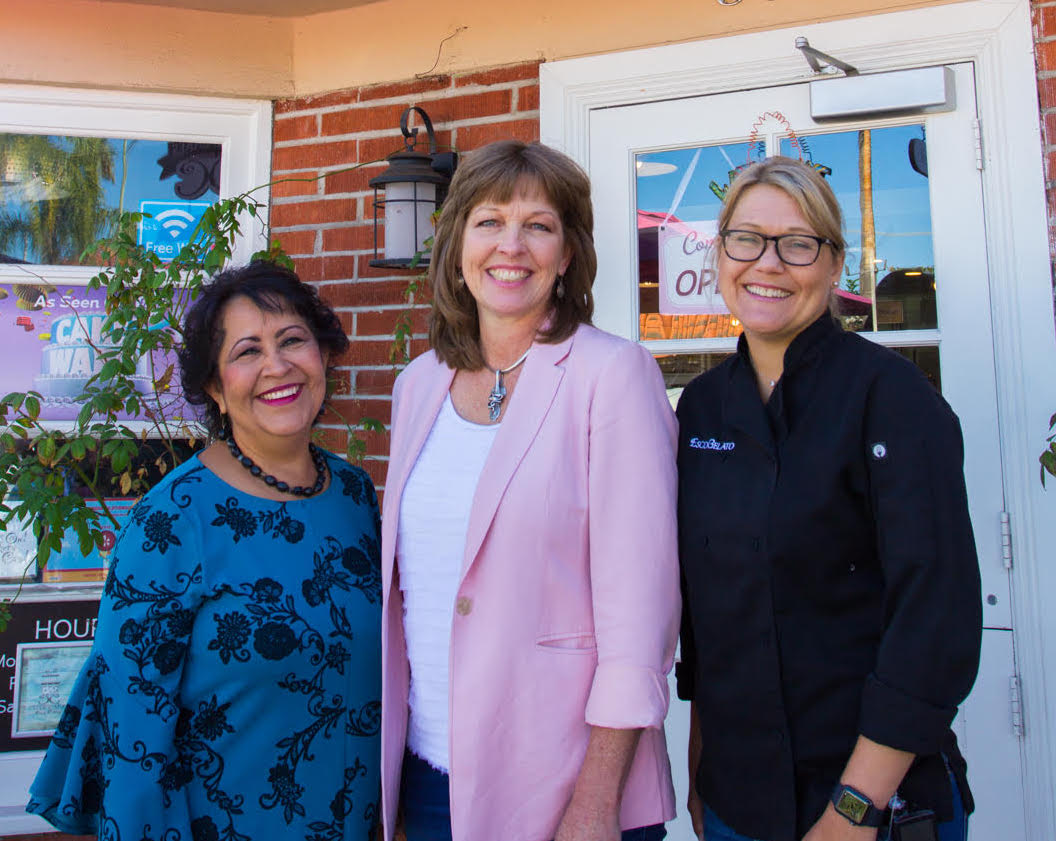 From left to right: Downtown business owners Louisa Magoon, Jill Reilly and Suzanne Schaffner
From left to right: Downtown business owners Louisa Magoon, Jill Reilly and Suzanne Schaffner
In honor of National Women's Small Business Month, the City of Escondido salutes women entrepreneurs who are taking risks to pursue their passions while contributing to the regional economy, adding jobs to our city, as well as improving the quality of life for residents and visitors alike.
Below, we take a look at how three Escondido-based women-owned businesses are embracing community, celebrating every occasion, and creating quality food experiences. Susanne Schaffner, Jill Reilly, and Louisa Magoon work in Escondido because they each embrace and appreciate the supportive community spirit within their city. Their respective businesses - EscoGelato, Cute Cakes, and The Grand Tea Room - are all local favorites that can be found in Escondido’s thriving downtown center.
A hometown local blends European flavor into her gelato
Growing up in Escondido, Suzanne Schaffner loved her community and the hometown feel of the downtown area, especially Grand Avenue. She fondly remembers shopping at Play Co, celebrating birthdays at Farrell’s or Swenson’s and enjoying the local feel of downtown Escondido. While studying and working in Europe as a young adult, Schaffner embraced the local vibe of the cities of Salamanca, Spain, and Stuttgart, Germany where she lived and dreamed of a way to bring that back to her hometown. This became a reality when eight years ago she opened EscoGelato, a café and gelato shop located in the heart of downtown Escondido.
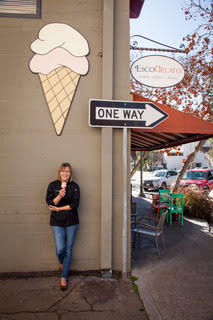 Owner Suzanne Schaffner outside Esco Gelato
Owner Suzanne Schaffner outside Esco Gelato
Like gelato shops throughout Europe, EscoGelato prides itself on creating fresh, seasonal gelato using locally grown ingredients.
“We are first and foremost an artisanal gelato shop,” Schaffner said.
This means they make their gelato one batch and one flavor at a time. With 14-to-18 flavors offered throughout the day, EscoGelato is making new batches every day. While chocolate is the only flavor available daily, seasonal favorites such as fig and mascarpone, pumpkin sweet cream cheese, roasted butternut, green tea and honey, and the fall must-have, Italian-inspired hazelnut cookie can be tasted this season. Schaffner is also inspired to create flavors from food combinations she sees around her. For example, her apricot and goat cheese gelato was created after seeing this combination on a cheese board at a party.
 Some of the flavors Esco Gelato makes in house daily
Some of the flavors Esco Gelato makes in house daily
“That’s what’s fun about small batches,” she said. Every flavor Schaffner creates has to be something she too will eat. Her rule for gelato is, no matter how creative the idea, it has to taste amazing.
One of the things that helps make Schaffner’s gelato and café menu delicious is that she sources her ingredients from local farmers and businesses. Here too Schaffner’s love for the European lifestyle plays a part in her decision to use local ingredients.
“One of the things I love about Europe and its way of life is that they celebrate their local products,” she said. “We use local ingredients in all our food. Figs, lemons, strawberries, carrots, tomatoes, avocados, and passion fruit all come from local family farms in the area. My brother even goes to local houses and trades lemons for gelato.”
Schaffner said her realization that local ingredients were the best to use came when she ordered a CSA (Community Supported Agriculture) box from local organic farm, Be Wise Ranch. “The greens in their box were the best I’ve ever had,” she said..
Stehly Farms is also a local organic farm that supplies many of the fresh ingredients that go into the gelato and café items, including the avocados that make up the Deedo panini. Sourcing locally not only helps support community businesses, but also allows for Schaffner to maintain a near zero waste kitchen because local inventory cuts down on food and shipping waste.
Visitors can find gelato, paninis, and select coffees throughout the day at EscoGelato. With seating for 20 inside, its comfortable and casual environment is reminiscent of the European cafes Schaffer is so fond of.
Additionally, Gelato-on-the-Go, a mobile gelato cart, is available for events such as weddings, school functions, and events. Schaffner said she was honored to be included in Celebrate the Craft at Torrey Pines where she brought the cart. This event celebrated California’s rich and thriving culinary foods and its artisans.
With eight years as an integral member of the Escondido community, Schaffner said she is “thankful this all worked out” and is grateful to be part of such a thriving community, including surrounding businesses.
”I really appreciated the community of businesses,” she said.. “I appreciate that there is support from the other shops in the community. The café and restaurant community really supports each other.”
She believes in sweet celebrations for every occasion
When you mix southern hospitality with yummy family recipes, and sprinkle in a relentless creative passion for perfection, you will find yourself in the city-center of Escondido at Cute Cakes. Cute Cakes CEO and Cake Artist Jill Reilly has been making designer cakes in Escondido for over 10 years and her bakery and café has quickly become a staple in the community.
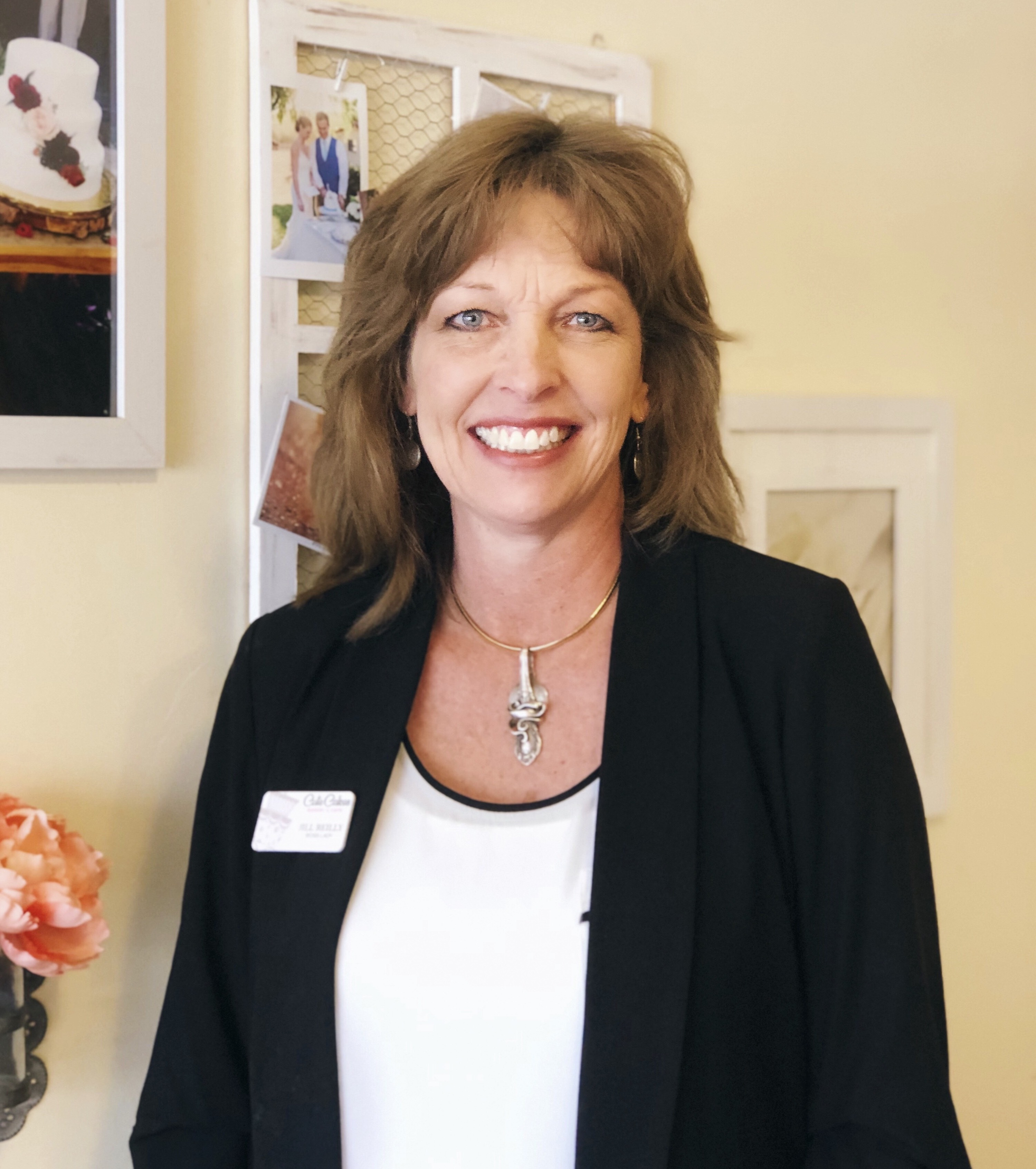 Owner Jill Reilly in Cute Cakes
Owner Jill Reilly in Cute Cakes
Cute Cakes is all about celebrations and Reilly makes cakes and sweets for every celebration, from birthdays to weddings, to gigantic anniversary cakes for businesses like Sycuan Casino that have to feed 10,000 people.
What started as a custom bakery has now become an award-winning cake shop, café, and party and decorating studio.Reilly has been awarded the Best Of honor by the wedding style website, the KNOT for the past 10 years and has been in its prestigious Hall of Fame for five years. She has also won the Couples Choice Award on Wedding Wire every year since she began making cakes 11 years ago. In 2017 Reilly was featured on the television show Cake Wars when it premiered with the “Captain America” episode.
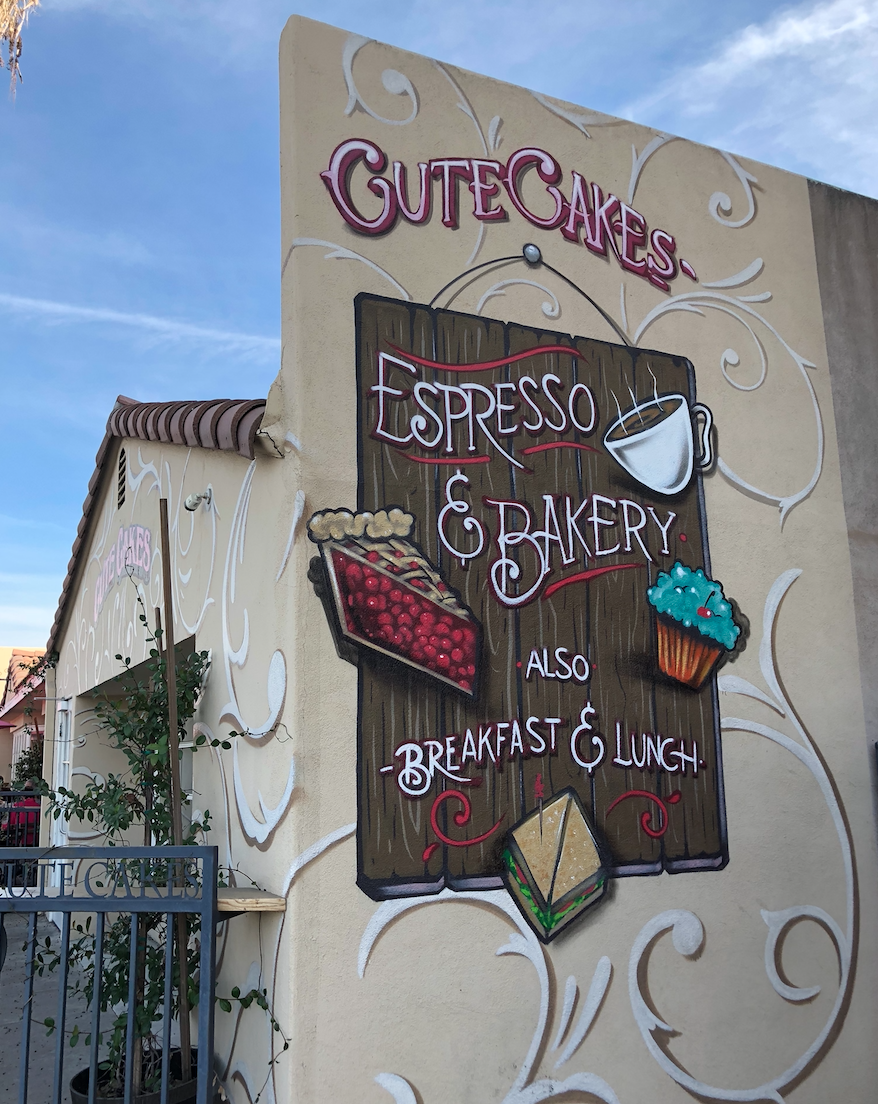 Outside photo of Cute Cakes
Outside photo of Cute Cakes
The café serves breakfast and lunch daily with a special brunch menu on the weekends. As a self-proclaimed “coffeeholic” Reilly also offers a wide variety of coffee flavors that compliment both the sweet and savory items on the menu. Locals have become regulars here because the café is filled with southern charm. Stepping inside the cozy café, guests can choose to sit at tables, on warm, inviting couches or comfy chairs. Games are set up all around, as well as a complimentary library stocked with books for every interest. Others may choose to set up their computer by the fireplace and get some work done while they eat a sweet treat.
Also available on site is a spacious party studio that hosts cookie and cake decorating parties, cake decorating workshops, and private events.
What sets Reilly’s menu apart is her passion for baking, her creative talents, and her homemade southern-inspired family recipes. “The recipes themselves are Southern inspired. Most of the recipes are family recipes,” she said.
This includes the carrot cake, chocolate cake, sweet southern pound cake, the Virginia apple walnut cake, and the Deep-South chocolate cake. Menus include favorites such as the Apple Fritter Monte Cristo, the Johnny Tsunami Wrap, and the Ham Pear Gorgonzola Panini. Of course, southern sweet tea is also a drink option on the menu.
While food and sweets can be ordered on a grab-and-go menu, it’s the designer cakes that gave Cute Cakes its name.
 Local patrons enjoying breakfast together at Cute Cakes
Local patrons enjoying breakfast together at Cute Cakes
Reilly, who loves to decorate, said one of her favorite things to create is making cakes that look like other foods such as pizza or a hamburger. “Tricking the eye to make it look like something else is fun.”
When asked if the unique cake designs created on popular television cake shows has challenged her, Reilly said she’s up for any design request. “I have some of the most fabulous decorators and we can do any design.”
Reilly thinks these shows have highlighted the wonderful art of cake decorating. She enjoys the challenge of creating new designs and cakes she’s never made before. She said one of the most recent challenges is the trend for upside down cakes. She explained cake decorators are like sculptors; they have to think about things like structural support and how to carve their designs into reality.
Reilly - who believes women owned businesses are successful because women are natural multi-taskers and they bring compassion to their work that helps build relationships and passion into their products - is grateful to be a business owner in Escondido. She is so invested in the area’s growth that she bought the property where Cute Cakes is located. Her hope is that Cute Cakes, like the other shops and restaurants on Grand, will help keep this special community thriving.
Pouring community in every drop
An invitation to a tea party became the inspiration for bringing a proper tea room to Escondido. The Grand Tea Room owner and operator Louisa Magoon came into the tea business after a successful career in corporate food services. As the Director of Risk Management and Human Resources for Bubba Gump Shrimp Company, she oversaw its daily operations throughout the United States. But on the side, she found herself hosting tea parties after attending one.
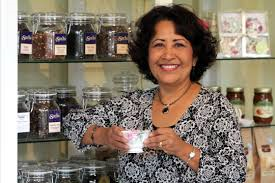 Owner Louisa Magoon at The Grand Tea Room
Owner Louisa Magoon at The Grand Tea Room
When there was a major shift at her company that left her looking for a new job, her husband encouraged her to try something new and open her own tea room and gift shop. Living in Escondido, she knew it was the perfect place for such a shop. They searched Grand Avenue and found a vacant spot that needed some work. They signed a lease in February 2011 and by August, The Grand Tea Room became a downtown staple that Magoon now runs with her daughter Leola.
The Grand Tea Room offers guests a grand experience in downtown Escondido. Walking into the space, tables adorned with fresh roses, and set with gold-lined tea cups and saucers painted in blue, red, yellow, and pink roses atop richly colored burgundy tablecloths and lace covers, guests will feel like they have been transported to a British cottage. Crystal chandeliers, artworks, and china cabinets filled with yet more delicate plates and tea settings surround the room.
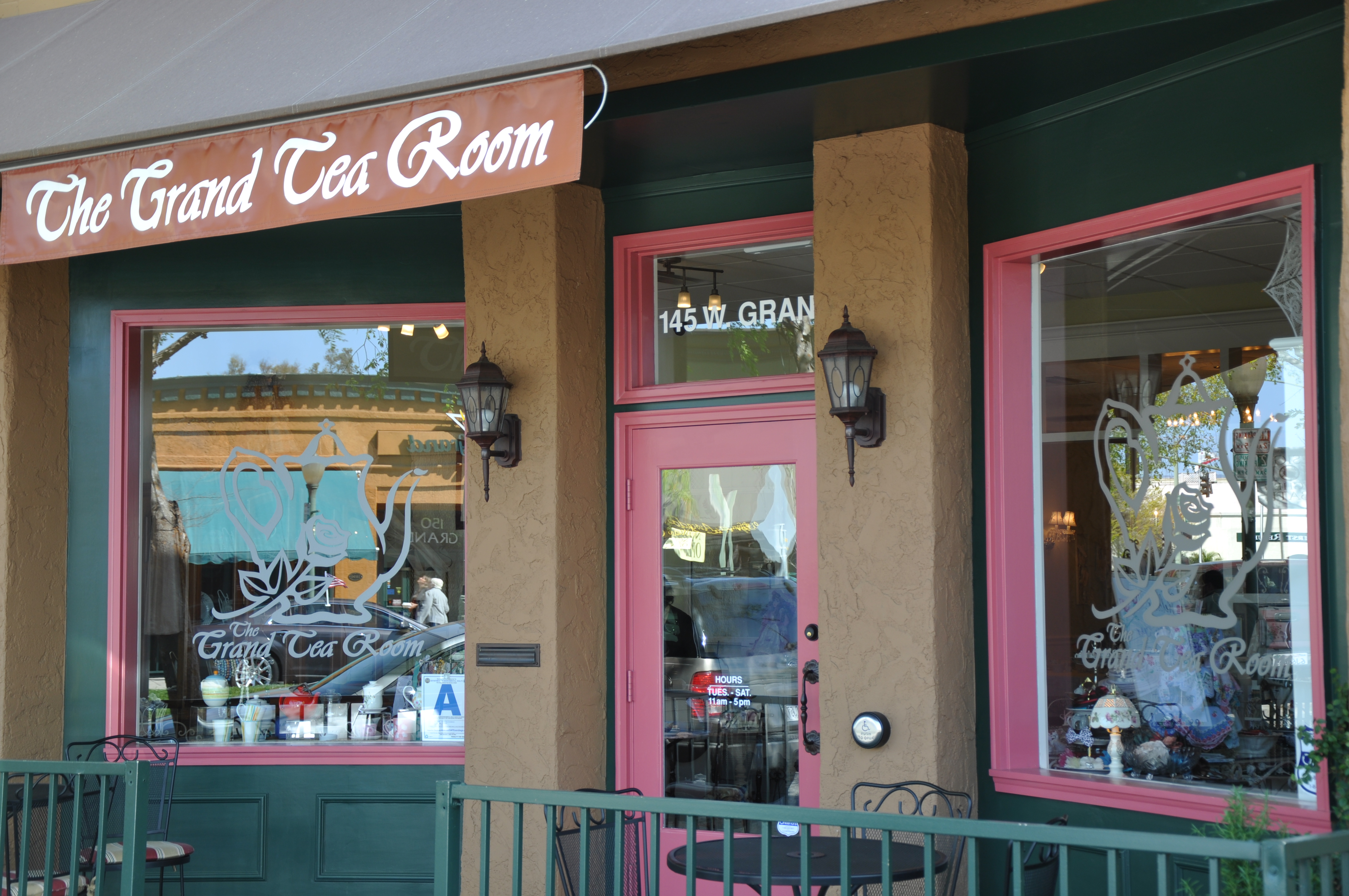 Outside patio area of The Grand Tea Room fit with outdoor seating
Outside patio area of The Grand Tea Room fit with outdoor seating
With over 45 teas available, the most popular among them are the Crème Brûlée Caramel and the Buccaneer Black tea which is a blend of coconut and chocolate. The Grand Tea Room is a full-service tea room and gift shop. What makes The Grand Tea Room unique is that there is a full service kitchen on site so all the food served is made fresh daily and changes seasonally. These tasty bite-sized delights include fresh salads and soups including their signature soup – tomato; fruit and plain scones; miniature shepherd’s pies and quiches; smartly cut cream cheese and cucumber, egg salad, and chicken sandwiches; and various desserts including lemon bars, cupcakes, chocolate cake, and ones to be eaten with a spoon such as chocolate mousse. Teas are served in floral teapots and are tagged with names to help guests remember which tea they have chosen and the food is creatively displayed in a sweet/savory order on tiered serving dishes.
Enjoying a tea is a grand event and guests come to The Grand Tea Room dressed at the ready. Most are adorned in their Sunday best dresses or pantsuits and fine jewelry; while others go all out donning hats, British-styled fascinators, and gloves (that can also be found in the gift shop).
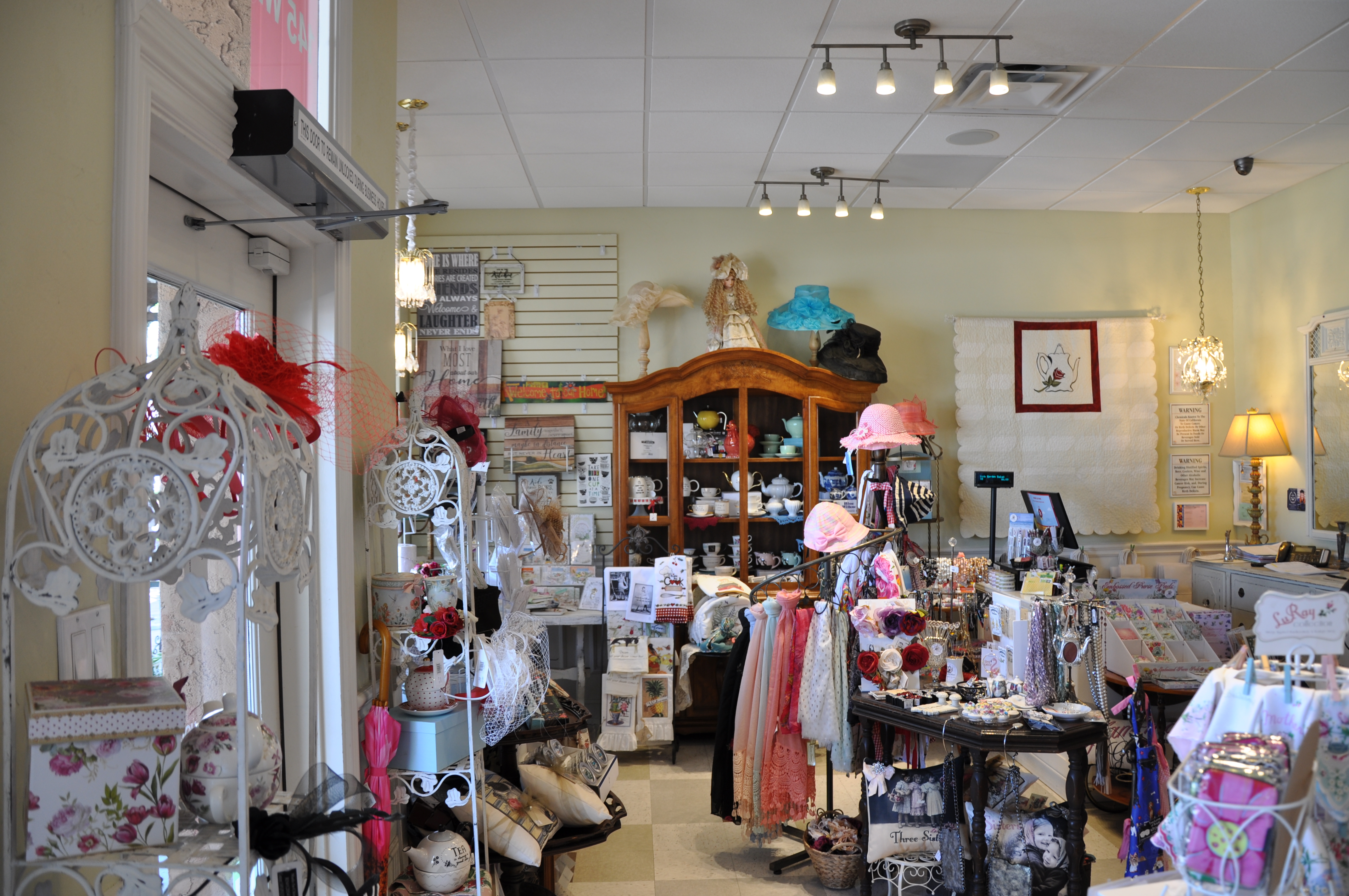 The gift shop at the Grand Tea Room
The gift shop at the Grand Tea Room
A high tea is a two-hour experience and Magoon recommends guests call ahead to reserve a time but walk-ins are welcome when there is space. Magoon offers three tea times daily at 11:00 a.m., 1:30 p.m. and 4:00 p.m.
The Grand Tea Room happily hosts specialty parties such as bridal showers, baby showers, birthday parties, and children’s celebrations. Parties can be scheduled during business hours or as private events.
Even within her own business, Magoon supports women-run endeavors. In fact, it was a bridal shower that brought dinner theatre to The Grand Tea Room. Two guests who happened to be theatre performers became regulars at The Grand Tea Room and one day the women pitched the idea of creating a show for guests. Magoon was open to the idea and now twice a year, guests can enjoy a fully produced play while sitting down to tea in the evening. Shows are typically British-inspired plays or murder mysteries including Shakespeare’s works, plays by Oscar Wilde, and works by Jane Austen. With help from 413 Project Theater Co., the curtain will rise on a new production in February 2020.
While Magoon considers herself the management side of the business, she credits her daughter for being a true partner in the business. “We’re good at different things. My daughter is very creative; I come up with ideas, she runs with it.”
One of her daughter's ideas was a Downton Abbey themed party that became a hit as the television show was in its height of viewership. Leola also runs the kitchen and they both oversee the serving along with a four-person serving staff.
As a business owner, Magoon knows the importance of embracing other businesses in the Escondido area. That’s why as a member of the Board of Directors for the Escondido Downtown Business Association, she helps get the word out on upcoming events and meetings in newsletters and alerts to the community. Her gratitude for the support she received when opening her tea room is displayed in her willingness to give back.
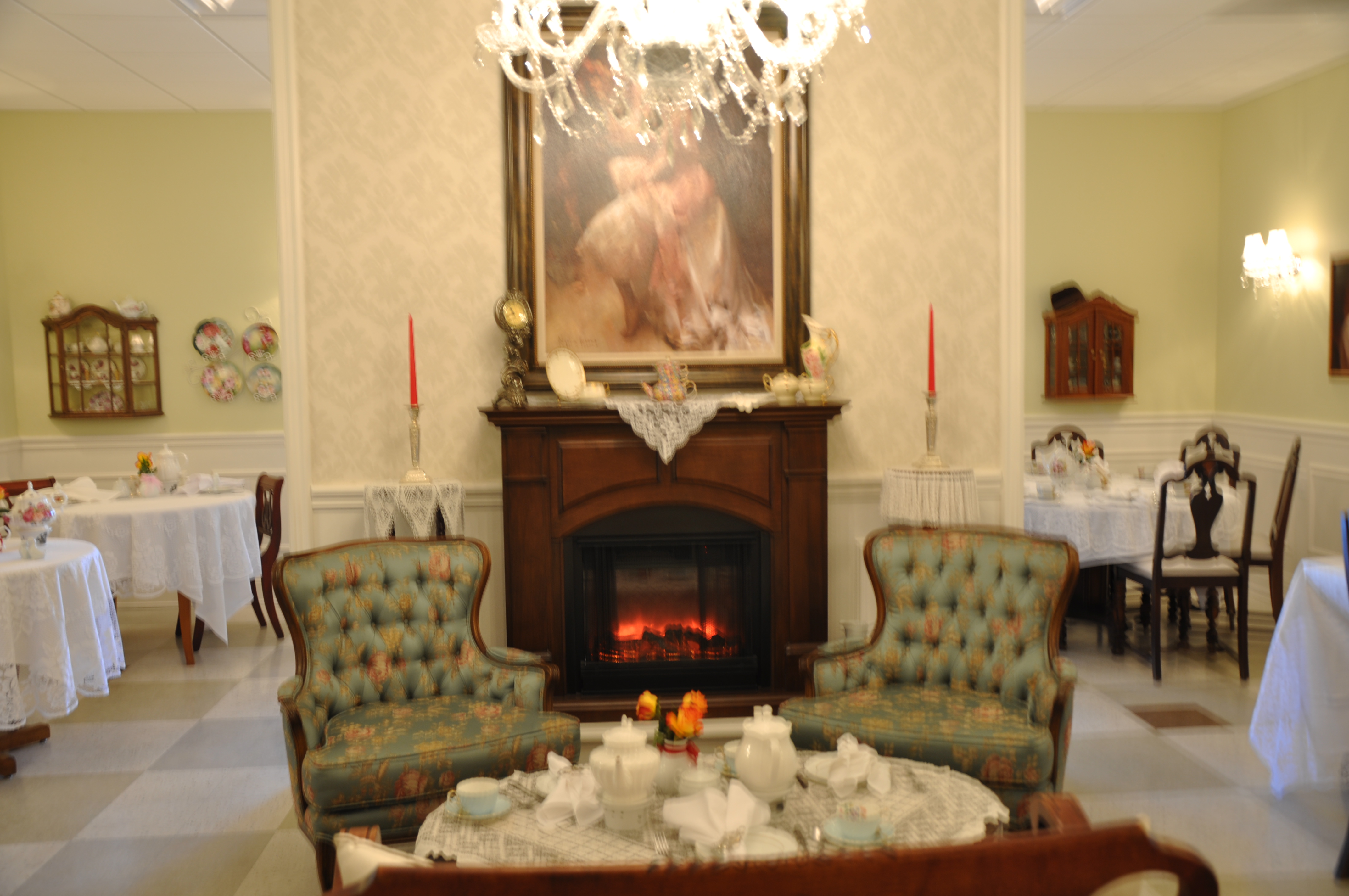 The elegant interior of The Grand Tea Room
The elegant interior of The Grand Tea Room
Although the idea of a tea room in Escondido may have sounded crazy eight years ago when she started, Magoon has found that the city has embraced its charm whole-heartedly. “Even the naysayers have come on board,” she said. “Not too long ago at a city event someone said, ‘I’m so amazed this is working.’”
Not only is it working, Magoon sees guests coming from all over, including Temecula, Rancho Santa Fe, Carlsbad and even Hemet to enjoy tea. She knows that its success lies in the reality that people enjoy moments when they can sit down, have wonderful conversations with friends, and feel special.
Thriving and bringing community together
All three women agree Escondido is a wonderful place to run a business and they feel that both the community and city leaders are instrumental in supporting their businesses. Not only do they work to build their own businesses, they also work with community leaders to continue to grow the area. As Jill Reilly said, “As a property owner, it’s important to me that Grand does well. I’ll do whatever I can to be part of it.”
Subscribe to "Escondido Business Insight" for more stories like this delivered monthly to your inbox.
Subscribe to "Escondido Business Insight" for more stories like this delivered monthly to your inbox.
Inspiring the Next Generation of STEM Workers During North County Manufacturing Day
North County employs over 1.2 million workers in industries such as life science, telecommunications, software development, medical devices, sporting equipment, and so much more. Additionally, this job market keeps growing with 54% of the workforce in North County employed in the manufacturing sector, up 27% since 2012. On October 1, manufacturing companies from around North County gathered to promote Manufacturing Day at Cal State San Marcos.
For over 10 years, this national event has been held during the first week of October to celebrate and showcase the many modern manufacturing careers available to young adults around the country. Industrial businesses around the U.S. celebrate National Manufacturing Day by educating their local communities on the impact of industry, the value of manufacturing, and the exciting, diverse opportunities of a modern industrial career. Students are invited to participate in local open house events or exhibits that feature the various manufacturing companies in their area. The intention is to educate students on the many opportunities in their hometowns and give them insight into the type of training and education they need to pursue these job opportunities.
 Student attending Manufacturing Day
Student attending Manufacturing Day
Escondido’s economic development manager Michelle Geller explains, "Escondido is home to some of North San Diego County's most notable companies in the manufacturing sector, including Kiesel Guitars, Meziere Enterprises and One Stop Systems. Celebrating manufacturing on a special day each year reminds everyone that there are a lot of important, innovative products being made right here in our city."
For the past two years, the North County Manufacturing Day Expo has been held at Cal State San Marcos and has had an attendance that reaches 1,200 middle school and high school students from across the county. This year, students participated from as far as Warner Springs and Grossmont with the majority from Oceanside, Carlsbad and other North County school districts. Schools from Escondido included Valley High School and Orange Glen.
North County industries such as Hunter Industries, Creative Electron, General Atomics, Genentech, and Nordson Corporation as well as schools such as Palomar College, Mira Costa College, and Cal State San Marcos were there to speak to students and answer questions.
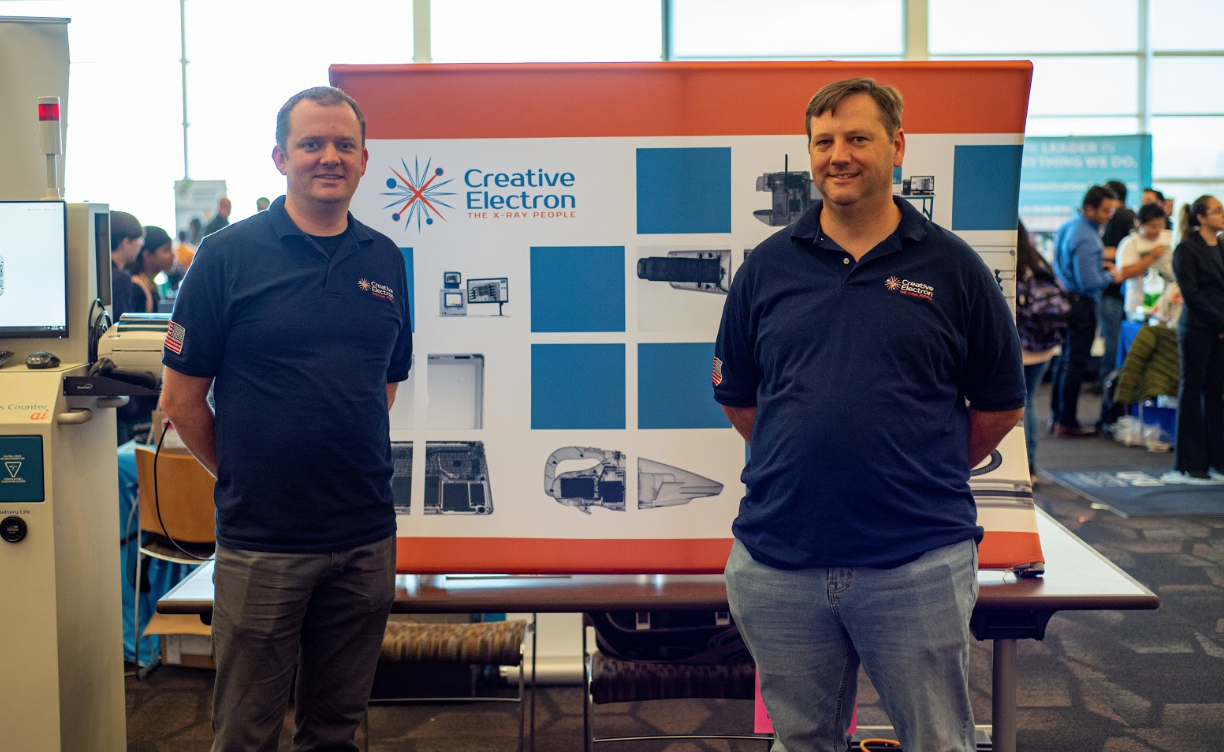 Creative Electron booth at Manufacturing Day Expo
Creative Electron booth at Manufacturing Day Expo
Hunter Industries Incorporated Senior Manager of Global Talent Management, Scotty Lombardi sees this event as an opportunity to reach out to young talent who are interested in learning more about his company. “We participate to inspire the next generation to pursue jobs in STEM, manufacturing, and engineering. Our future workforce needs are dependent upon the ever-lasting relationships we’re building today. The Manufacturing and Engineering Day Expo connects students to what’s being made, and to careers, right here in our own backyards.”
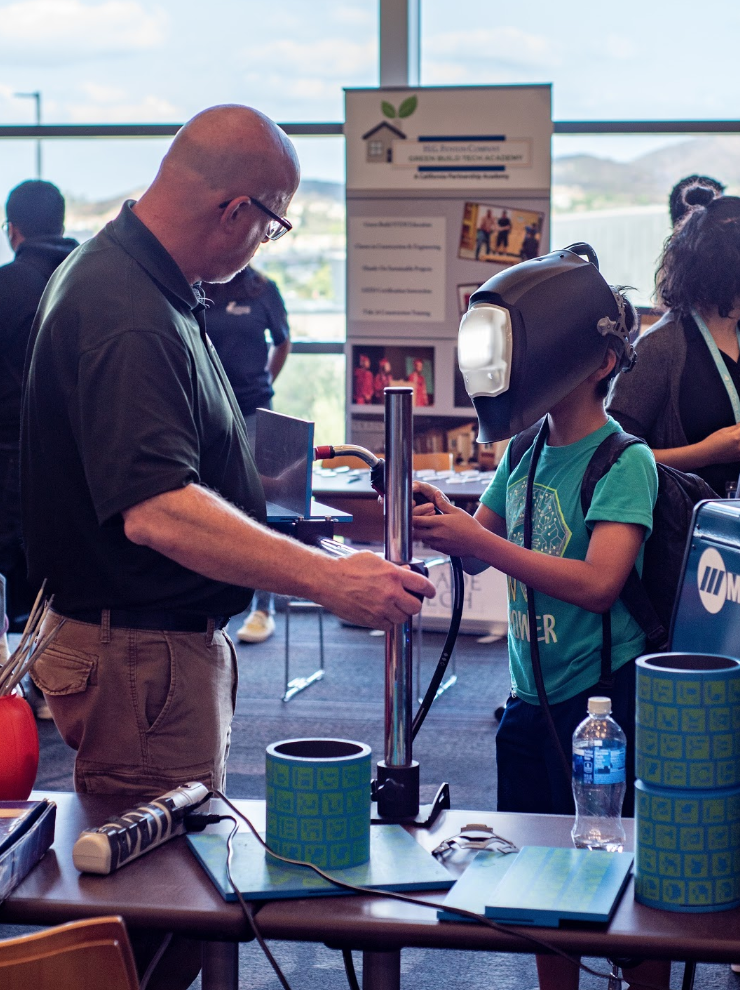 Student at Manufacturing and Engineering Day Expo
Student at Manufacturing and Engineering Day Expo
The event’s organizer was Erik Bruvold, CEO of the San Diego North County Economic Development Council. Bruvold works with North County companies to help promote economic growth in the region, market its development, work with individual companies one-on-one to meet their goals, and to work with educators and local employers to create pipelines that ensure a strong and growing workforce in North County.
When asked why this event is important to the area, Bruvold explained, “This gives companies an opportunity to give back to the community through outreach and to engage with a future workforce. It gives students an opportunity to see the breadth and depth of manufacturing in North County.”
 Students playing VR at Manufacturing and Engineering Day Expo
Students playing VR at Manufacturing and Engineering Day Expo
For students looking for inspiration as they consider their post-graduate futures, the impact of Manufacturing Day is influential. In 2018, “275,000 people participated in 3,000 MFG Day events across North America,” according to MFG Day. “More than 80% of students said they became more convinced that manufacturing provides interesting and rewarding careers after attending these events.”
While the traditional Manufacturing Day model is to hold open houses, the North County event brought nearly 30 manufacturing companies to the Cal State San Marcos campus. This model eases concerns about capacity, safety, and sensitive work or trade secrets that might make the open house model difficult for some, while also putting multiple organizations in one place, making it easier for students to be introduced to several industries and companies at one time.
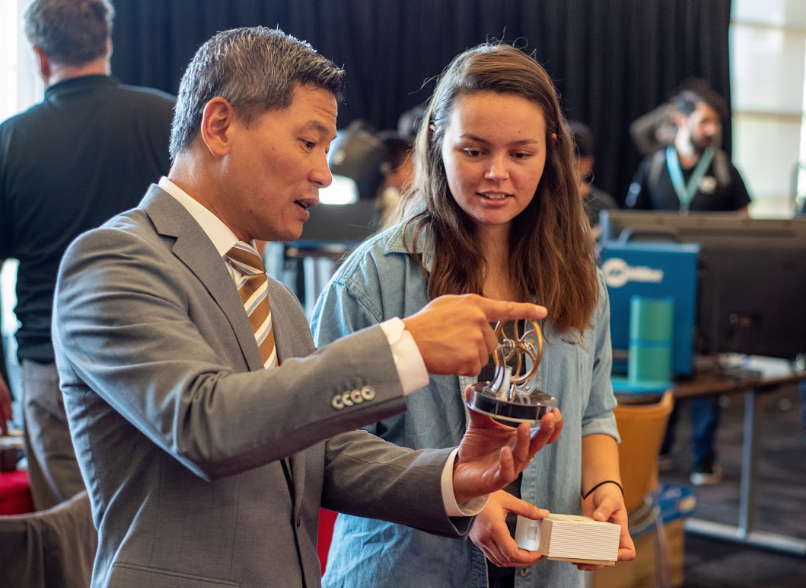 Student and a life science company representative at Manufacturing and Engineering Day Expo
Student and a life science company representative at Manufacturing and Engineering Day Expo
The free event hosted companies that ranged from life science manufacturers to telecommunications and software companies, and to advanced manufacturing firms. Each company was assigned its own station to promote the business. Some created hands-on exhibits that engaged the students directly, while others brought representatives from various departments such as human resources or marketing to address the needs of their companies. Several included videos, marketing brochures, and takeaways as part of their exhibit. With so many students, the event was split into morning and afternoon sessions.
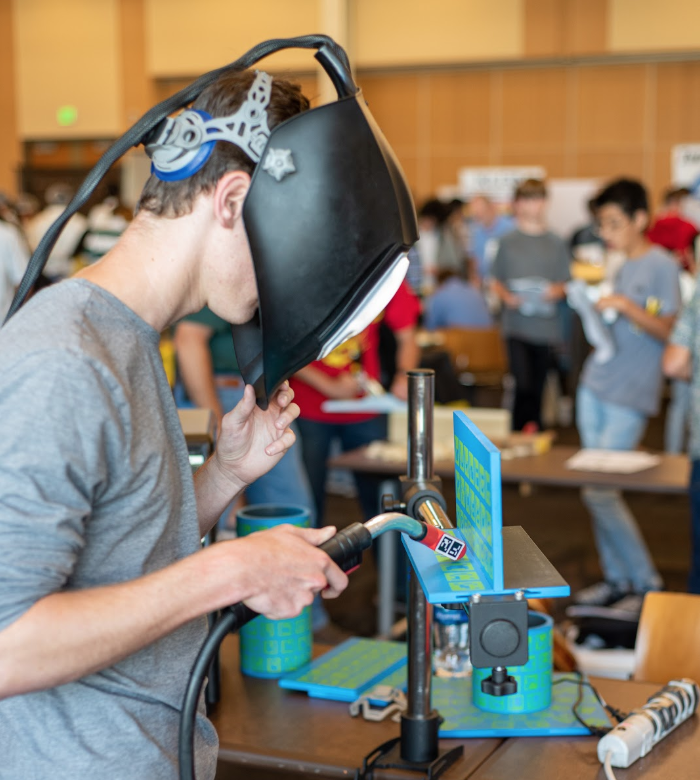 Student interacting at Manufacturing and Engineering Day Expo
Student interacting at Manufacturing and Engineering Day Expo
These exhibits gave San Diego students education to the types of future jobs that might be available to them, including software engineering, mechanical engineering, chemical, and biomedical engineering as well as mainline manufacturing positions such as technician jobs and design of new products.
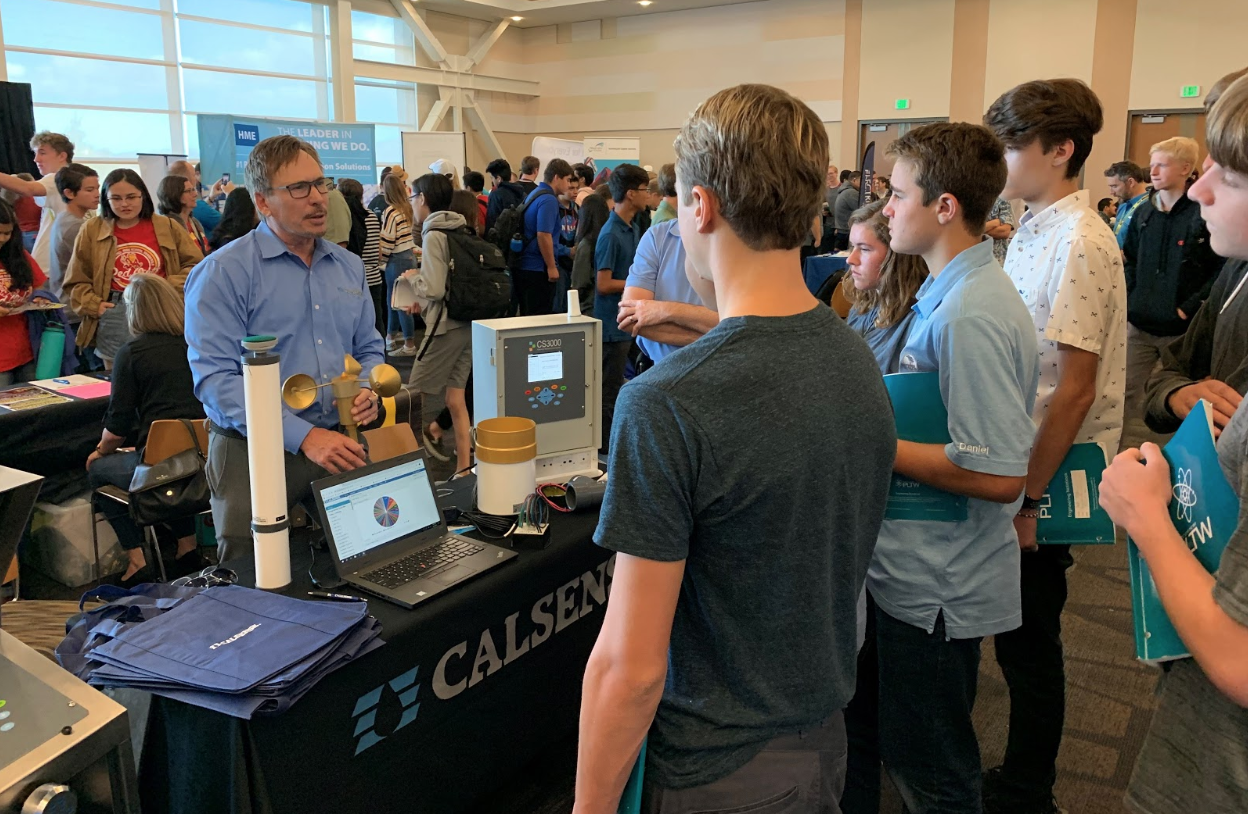 Calsens displaying at Manufacturing and Engineering Day Expo
Calsens displaying at Manufacturing and Engineering Day Expo
New this year was a presentation by the College of Math and Science from Cal State San Marcos that addressed the STEM undergraduate work at the university. For some of the students, this was the first time they have ever visited a university campus and the afternoon presentation gave them a clearer understanding of the importance of higher education as well as the benefits that STEM learning can bring to future careers.
Bruvold said this presentation was very well received. “I think a highlight for the students was getting to hear from current undergrads who are just a few years older than the high school students and understanding how they are succeeding in STEM.”
Bruvold added the turnout was fantastic and the overall day’s events came together very well with positive feedback from both the exhibitors, students, and guests.
For more information about Manufacturing Day or manufacturing companies in North County, visit the San Diego North County Economic Development Center.
Subscribe to "Escondido Business Insight" for more stories like this delivered monthly to your inbox.